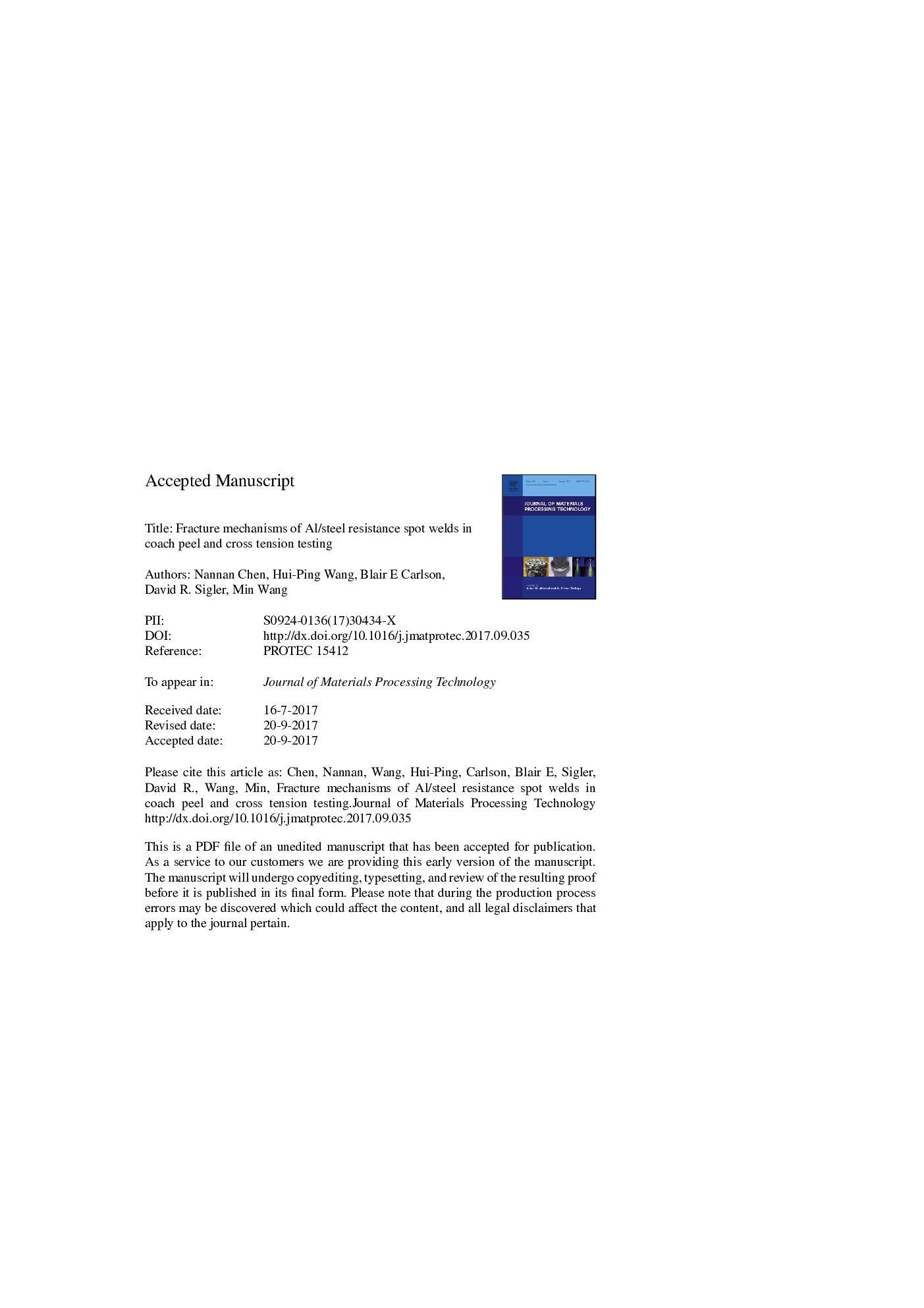| Article ID | Journal | Published Year | Pages | File Type |
|---|---|---|---|---|
| 5017589 | Journal of Materials Processing Technology | 2018 | 51 Pages |
Abstract
In Al/steel resistance spot welding, increasing welding current helped to reduce generation of dendritic grains and shrinkage, and increasing welding time tended to reduce shrinkage but promoted the transition of grains from preferable columnar to dendritic. Iron phase, existing between the Fe2Al5 fingers of a thin IMC layer facing the steel side, was observed to serve as crack propagation inhibitor and improve load carrying capacity of Al/steel interface. The amount of iron phase decreased as the IMC thickness grew, so did the load bearing capacity. Three fracture modes were observed in the cross tension test: interfacial fracture in the IMC layer, partial thickness fracture within the Al nugget next to the IMC layer, and partial button pullout fracture. All fractured coach peel test samples displayed consistent partial button pullout fracture mode following large deformation of the Al sheet. The crack in the cross tension test always initiated in the IMC layer while the crack in the coach peel test often started in the Al fusion zone. Two characteristic peak points were observed in the load-displacement curves of the coach peel test. The key point for improving mechanical performance under coach peel loading was to increase the first peak point by reducing Al thinning, increasing the Al nugget size, and limiting the IMC layer growth.
Related Topics
Physical Sciences and Engineering
Engineering
Industrial and Manufacturing Engineering
Authors
Nannan Chen, Hui-Ping Wang, Blair E Carlson, David R. Sigler, Min Wang,
